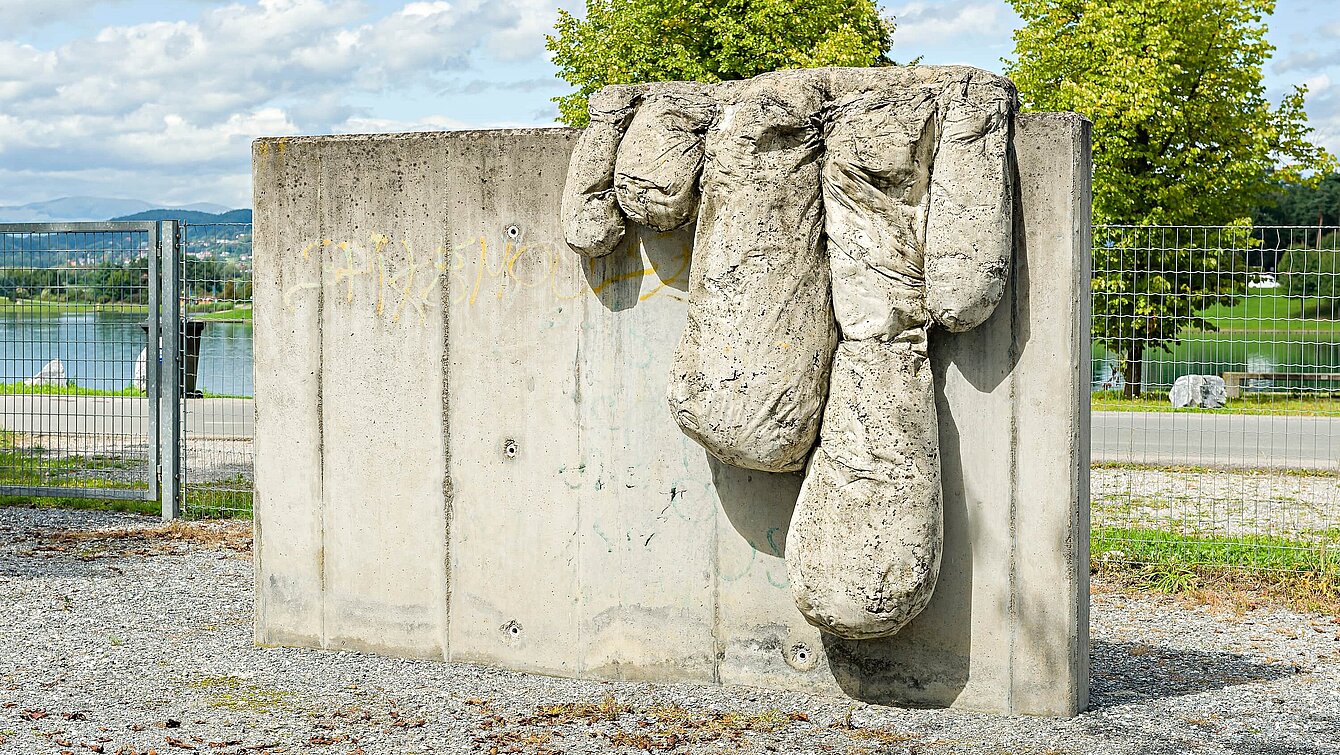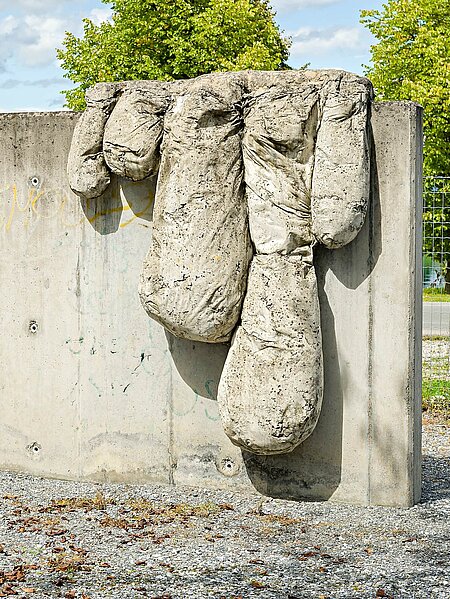Wand is the only sculpture realised by the painter and graphic artist Bohatsch. In this work he transforms painting into a sculptural experience. The swelling form above the concrete wall simulates the slow trickle of paint over a canvas. As if a painter had squeezed pigment from a tube onto the canvas, here the concrete mass rolls viscously over the wall until the soft, fluid form solidifies into a hard, solid shape. Growth and decay are themes as well as the merging of idea, painting and sculpture.
Wand
Erwin Bohatsch, 1992


Image Credits
Author
Christa Steinle
Location on map
Position 24
Owner
Universalmuseum Joanneum
Artist biography
Erwin Bohatsch
Show all
About the sculpture
Since the beginning of the 1980s, Erwin Bohatsch has been working as a painter and graphic designer. At first he was part of the major representatives of the “Neue Wilde” movement of “fierce” painting in Austria, before developing – since the 1990s – into a painter of second modernism. As such, and unusually for Austrian art, he did not remain paralysed dealing with abstraction in natural abstraction, but was spurred on a topical discursive painting method on the basis of reflecting on colour field painting. Hence he is a painter and not a sculptor, and yet we find a sculpture by Erwin Bohatsch at the Graz Skulpturenpark.
It is the only one he ever made – a commissioned work. One sees a massive grey concrete wall, above which a voluminous swelling concrete shape was positioned, pressing toward the ground. This wall forms one sculptural element and is supposed to simulate a screen. It replaces the pedestal of a sculpture.
The second sculptural element, the pending concrete volume is supposed to simulate running colour slowly creeping across the canvas. Just like as when painting, the painter squeezes colour paste onto the canvas, the gooey mass of concrete rolls in five tracks over the wall until the dropping ceases and the soft and fluid mass turns to a rigid form.
However, this is not only a transformation of material, i.e. the transfer of one material state into a different material, but one could also understand the five tracks as the artist’s hand, conducting the brush and embracing an image or kneading clay into a sculpture.
Thus Bohatsch transfers his experience as a painter into sculptural experience. The active gesture of applying colour onto the painter’s canvas is transferred into a supra-temporal dimension – the one of the stone memorial by Bohatsch the sculptor.



















